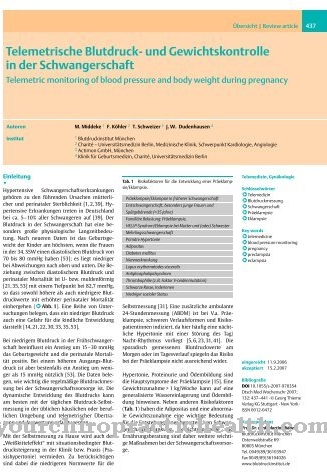In Buddhism, meditation has been the ideal way to relax for centuries. But meditation is not only used for relaxation and deepening the ability to concentrate. In Buddhism, meditative immersion is also considered to be the most important method to find out about the destructive workings of the human mind. At first the meditator only observes the breath.
Sitting quietly on the pillow, he notices how thoughts and feelings come and go. In meditation he registers the volatility of thoughts for a long time and studies the human readiness to react. It happens again and again that someone likes one of the thoughts. The mind wanders and forgets that it wanted to pay attention to the breath.
Many years of meditation experience mean that we no longer act out our feelings all the time and recognize them as fleeting and often meaningless impulses in the mind. The attachment to ingrained thought patterns, judgments, feelings or opinions often seduces people into neurotic behavior. The attachment to certain opinions, alleged insults or destructive thoughts can cause lovesickness, envy, possessiveness, impatience, anger, hatred or a desire for revenge.
The whole range of human dramas arises from the Buddhist point of view in the mind. Consequently, it must be recognized and combated there too. Meditators can learn to calm the overly reactive mind through meditative exercises. In meditation you learn to stop reacting to everything that appears in consciousness as a thought, sensory impression or feeling.
The longer someone practices meditation, the easier it is for them to relax and let go. Nevertheless, constant introspection and intensive meditation training are required in order not to constantly fall back into old patterns. Thanks to the latest technical means, there are now also different ones Meditation appsthat can help to incorporate brief relaxation into everyday life.
Meditation: The little island of calm in everyday life
In recent times, meditation has established itself as a small island of calm in everyday life in the West too. It is increasingly being torn from the original religious context. In Christianity or in psychology, too, people work with meditative exercises today. Many people in civilized societies regard meditation as a simple relaxation exercise from an esoteric context that everyone can use.
In addition to the classic Buddhist breathing meditation while sitting quietly on a pillow, there are now numerous different forms of meditation. Many of these were developed in Buddhism. Without expert guidance and regular training, however, those interested cannot practice many of the forms of meditation known today. Deeper states of immersion harbor certain dangers that everyone should be aware of.
The newer forms of meditation mostly come from non-Buddhist contexts. For example, under Bhagwan Rajneesh (later Osho), dynamic forms of meditation were developed in Poona. In America, Jon Kabat-Zinn created non-religious forms of meditation that were intended for clinical use. Meditation beginners or advanced meditators can use a meditation app on a smartphone or tablet PC.
There are several problems with a meditation app: On the one hand, most meditation apps are only free in the basic or trial versions. You will then be charged, sometimes with larger sums. On the other hand, meditation apps cannot do anywhere near what a knowledgeable teacher can do. It is only about an introduction or a reminder.
Interested people discover simple meditation timers or more complex apps that do a lot more. A major drawback from the users' point of view is that most of the meditation apps offered are only in English. In view of the visual and content differences of the apps offered, it is advisable to test several of the free meditation apps over a longer period of time. For advanced meditators, most meditation apps are unlikely to do enough.
Relax at the push of a button
Can someone actually relax at the push of a button? This works well if the user gets involved. A meditation beginner could, for example, use the meditation app in a doctor's waiting room or on a long train journey instead of leafing through a magazine in a bored way. But the question is what the meditation app offers and to what extent the user can adapt it to his or her individual needs.
In addition, a meditation exercise requires a certain amount of rest for a defined period of time. As an advanced user, many users manage to immerse themselves in any place. But a beginner will not succeed. Another question is whether the meditation app offers spoken texts and / or images, detailed instructions or meditations of different lengths for different occasions.
Here the apps differ enormously in their offer. The menu navigation and the spoken text blocks may be in English for free meditation apps. The app content can be arranged in a confusing manner and can be operated intuitively, but it can also be confusing or not very user-friendly.
The best free meditation apps
The best - and with restrictions free - meditation apps are:
- 7Min
- Buddhify
- Headspace
- Calm
- Zazen meditation timer
- stop
- Breathe and Think
The user should not expect in-depth content. However, depending on the app, he can benefit from various options or use a timer to take a meditative break. The "7Mind" app offers various basic meditations of different lengths plus themed meditations. The German-language app blocks incoming calls during the meditative break.
The meditator can switch on a gong. The simple but attractive design of "7Mind" fits the content. It can be operated intuitively. Interesting: User suggestions are taken up by the app designer.
The entry-level app "Buddhify" offers 80 different mindfulness exercises and meditations. The user can use a timer. Meditation suggestions can be used for different situations. The app offers English-language texts. It has an attractive and user-friendly design.
"Headspace" offers several hundred meditation variants that are also available offline and as a gamification app. This playfully designed meditation app is also in English. The easy-to-use app is a "fitness studio" for the mind. Only the ten-day introduction is free. Then "Headspace" costs around ten euros per month. "Headspace" is therefore the most expensive meditation app in the better version.
The "Calm" meditation app offers in the permanently free basic version several meditation modes in English. The meditation units are underlaid with natural sounds and photographic backgrounds. Compared to Headspace, Calm is significantly more esoteric.
The German-language "Zazen Meditation Timer" is aimed more at meditators with experience. There is no speaker here, only meditations introduced with gongs. The length of the session is determined by the user. The desired meditation sessions can be saved together with the desired gongs. It is possible to mute the phone during meditation. The design of the user-friendly "Zazen Meditation Timer" is rather simple. So far, it is only available for Android devices.
The English language app "Stop, Breathe & Think" differs from the others in that it queries the user's mood. Then appropriate meditation units are offered. However, the user can also click on his favorite meditation. The intuitive operation of the meditation app is easy to manage and visually beautiful.
There is a free basic version of "Stop, Breathe & Think". There are also some free bonus features such as a switchable timer. Other additional features cost one or two euros fees. Other meditation apps such as the "Buddhist Meditation Trainer", the relaxation app "Take a Break" or the "Simple Meditation" app performed poorly in several tests or in customer reviews. A comparison test of all apps is worthwhile.
You can find your medication here
➔ Medicines for relaxation and nerve strengtheningShort breaks strengthen well-being
Short meditative breaks strengthen the feeling of wellbeing. The user of a meditation app can lower their stress level at any time, calm their swirling thoughts in a conflict or simply relax. Blood pressure, heart rate and other health conditions benefit equally from this.
Meditation apps offer a short or long pause in the middle of everyday life. They slow down the mind and calm the pulse. The user can learn to no longer react to everything, but to develop inner serenity.
















.jpg)











